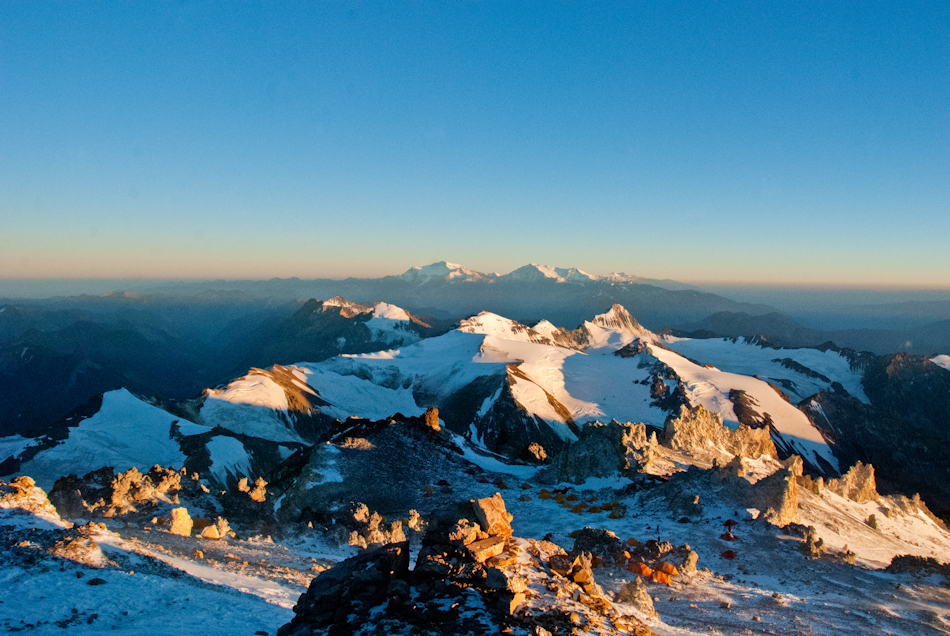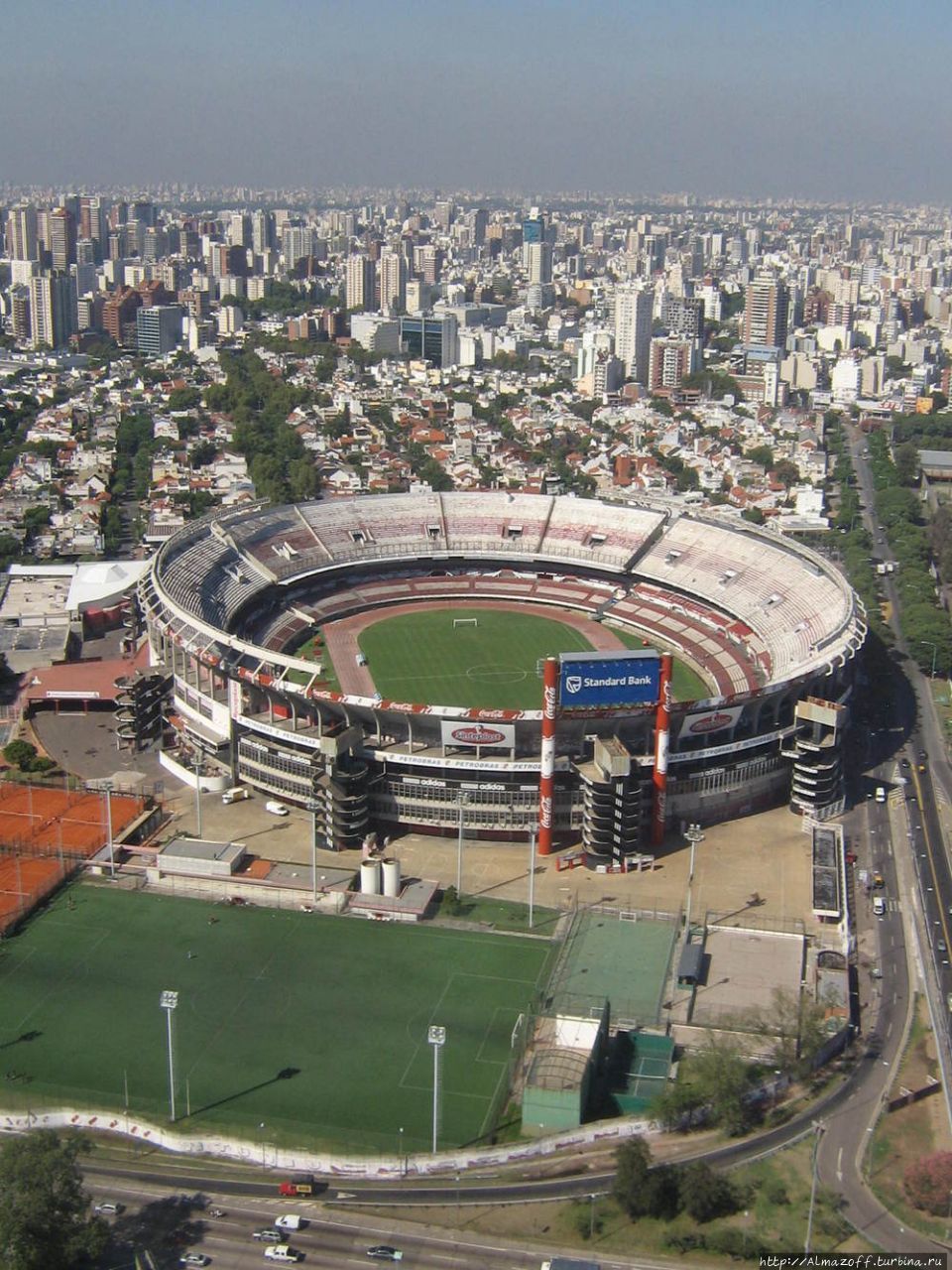Argentina: a tango with icebergs
«From Kazakhstan? In an original way …» — personal introduction was hardly an only reason when my Argentinean interlocutors displayed a genuine interest to the person naming himself «Kazakh» having the good knowledge of geography. In most cases, local residents could not recall a single country ending with «stan». But it was more pleasant to learn that here nobody practically heard about the character by name of Borat either.
And what did I know about Argentina? Its capital is Buenos Aires. Legendary football player Maradona is from here. Oh, yes — the passionate tango! Well, another song «Chaifa» is about the game that Argentina and Jamaica have played 5:0. In the past year, by the way, the national team of Argentina was beaten by that of Bolivia — 1:6 … But I was lucky enough to learn about this country much more after I had spent there the whole month.
It started from the time when together with my Russian friend we ventured to move to the highest point of the Western Hemisphere — peak of Aconcagua (6962) in the Andes. They began to collect general information about the peak and the country and understood that we had quitted mountaineering which was a part of our future journey. So there is much worth seeing and trying! There exists actually all in this huge country: on the northeast — jungle, deserts — on the north, the Pampas (steppes) — in the center, in the south — tundra and forests and, of course, the mountain range of Andes on all Western border of Argentina.

We flew from Moscow to Madrid (from there to Santiago and further) by the Spanish airline «Iberia» which allowed to take free 30 kg of cargo on transatlantic flight.
The study of the country in the capital of Argentinean wines and mountaineering region of «Mecca». The city of Mendoza, being high above the sea level with its greenery and murmuring ditches resembled Almaty! Only without a smog from the half-built constructions and traffic jams. In general, the city has a railway which connects it with whole Argentina as well as with Chile. Some time practically the entire commodity turnover between the two countries was carried out via it. But the economic relations between Chile and Argentina have come to naught because of the problems in dynastic marriage of the children of the presidents Pinocheta and Perona.
They ceased using the railway, and after some time it became worthless. The former presidents are no longer at the helm, and there exists a museum now in the building of old railway station Mendoza and the rails were replaced by modern highway with a concrete cover. So, we got on not a compartment, but a car and set out towards the Chilean border.
I will note straightly that even if you don’t have pesos in cash, dollars will be accepted in any institution at a slightly undervalued exchange rate.
Better than mountains can be only mountains — this truth is as ancient as the world itself. There are no trees on the slopes in Andes, only low bushes and sometimes flowers and cacti. Snow begins at the height of 6000 meters. You feel as if you were in the alpine desert, everything that surrounds you is very stern. One of the most difficult stages of famous Rally «Dakar» passes via Atacama, the highest alpine desert of the world, northward of the national park of Aconcagua. The entrance into the national park has the view to the southern wall of Aconcagua on which the most complex mountaineering routes pass.
We were pleasantly surprised by the service throughout the ascent: good food at base camps — with dessert and wine in the evenings, English-speaking staff, internet and satellite, services for transportation of expeditionary loads, the chance to send home a real postcard, hotel, cafe, police station and an art gallery — at the height of 4300 meters! And the most important thing is the lack of garbage.
On the descent to base camp we met our fellow countrymen — the teams of Yuri Moiseev and Artem Skopina. It was just a beginning for them and we wished them fine weather, good luck and good health. After the successful ascent of Mendoza, we visited the office of our travel agency where our further travel was mapped out.
Argentina is open to tourists with love, especially when they pay in cash, and after an hour’s talk we went to eat and have a rest, and in the evening of the same day our air tickets and necessary documents were brought directly to the hotel.
Few words about the Argentinean cuisine. All the Latin American meals are considered to be very hot and spicy. It is quite possible. But only not here! In the gastronomic sense Argentina is, more likely, a part of Europe in Latin America. No pepper”chili”! Nowhere! Only black milled pepper and only if you specially ask a waiter for it. In Argentina the beef is eaten by all and everywhere — in cafe, on the nature and at home. In every private house stands the «asado» in the courtyard — a device for cooking steaks on the coals that resembles a barbecue for shish kebab or grill. Stakes are often served in cafes «with blood», no pickles, mayonnaise and ketchup, and without garnishes. But a portion to serve weights up half a kilo! It is possible to serve meat with «mixtra» — salad from onions, tomatoes and leaves of salad with olive oil and balsam vinegar. Oil and vinegar are necessary on the table along with salt and napkins. All dishes are certainly washed down with excellent Argentinean wine from a province of Mendoza. Local residents say that the best white wine is red. I completely agree though white dry local wine is, of course, excellent and first-rate.
One cannot but mention the famous South American tea «Paraguay tea». It possesses the same tonic properties as coffee, but at the same time it doesn’t have a ruinous effect on heart. «Tea leaves» are filled in the special vessel made of a pumpkin (called «calebas»), poured into with hot water (not boiling water!) at the temperature of 70 degrees and drunk through a small silver tube with a strainer on the end («bombily»). One portion of «Paraguay tea» can be made about five times. Even to the beach Argentineans go with a special bag with «tea leaves», calebas, bombily and a thermos with hot water. When water ends, it can always be bought in any beach cafe (1 peso per liter).
We headed to the capital — Buenos Aires from provincial Mendoza. Social stratification strikes the eyes just in the vast megacity with 12- million population: skyscrapers of business centres and cardboard houses «favels» in the poor urban districts; vitreous luster of showcases of expensive shops and restaurants, and the beggars, whole families spending the night in the central avenues; numerous foreign tourists and policemen with guns and flak jackets at every turn; white-collars hurrying to work and obtrusive pimps of the evening city. I never heard the word «crisis» from the Argentines regardless of the awkward economic situation around the world. The country has lived under the conditions of crisis since 2001 and seems to get used to it. Nevertheless, the people do not get depressed and make money from what they have beneath their feet, i.e. earn from tourism.

«Maradona is all for us!». Everyone is sincerely confident here. And the capital area of La Boca lives with football. It is a kind of city within a city, with the its own laws and rules. Local residents even name it the Republic of La Boca. All the life boils including the criminal round the stadium of La Bombonera, a home playground of the well-known team of Boca Huniors. Therefore, the tourists are recommended to travel around the district only by taxi. Argentinean robbers are said to be civilized in their own ways: it is mentioned even in guidebooks that they approach and ask politely: «Life or the purse?» Naturally, you choose your life, give the purse, and the parties mind their own affairs quietly. Fortunately, we didn’t meet such «intellectuals».
La Boca is renowned not only for football, but also for being a homeland of the Argentine tango. One of the most beautiful dances of the world, a cocktail of passion, love, hope for bright future and immigrant anguish, originated in the port area of Caminito among total poverty and dregs of the population. Nowadays, the dancing couples can be found in most of the pubs and cafes in the center of the capital. For an additional fee visitors will be shown the real tango, and get their photos taken with the dancers. Those with strong wishes are offered to learn it at special schools (cost of classes — from U.S. $ 30).
We are flying over again from the noisy capital now to Puerto Iguazu, a town in the jungle that borders on Argentina, Brazil and Paraguay. It was discovered by the first Spanish missionaries. Since then, there has left not a monk, nor those whom they preached. Among the urban population indigenous Indians are less than 3% … They earn their living by selling simple souvenirs and begging. Through the city and its peripheries (vicinities) passes a big stream of contraband because of the specific location of the city at the junction of three states. Therefore, a large number of military units have been disposed in the surrounding jungle.

The main place of interest not only in this region, but also in all country is, certainly, Iguasu Falls which is the trademark of Argentina, just the same as Niagara Falls in the USA. In 2008 National park of Iguasu was visited by one million people and everyone left there a minimum of 20 dollars (entrance fee). The park infrastructure is so thought out that it allows even to take the invalid carriage on special gangway through the real tropical jungle to the observation area. And there is much to see! The virgin nature, wild animals, adventure tourism (for example, it is possible to sail far out by a motorboat directly under raging streams of the Falls).
And again flight — back to Buenos Aires. Though air traffic in Argentina is expensive enough and service leaves much to be desired it is the most convenient way of traveling over the country at long distances, whereas there is no railway communication in general. If there is no need to walk about 500-700 km, it is better take a long-distance bus. The ticket is many times as cheap as an air ticket in an economy class and not as comfortable as in a business class.
By transit we left through the capital for Patagonia, the extreme south of continent. Everyone is likely to read about the 38th parallel in the childhood in «Children of Captain Grant» by Jules Verne. It is only 1000 km from the archipelago Tierra del Fuego to Antarctica- penguins, whales, marine lions, guanacos and armadillos… The Unforgettable Perito Moreno glacier is located 78 kilometres away (48 ml) from a small city of El Calafate.
Before my very eyes the glacier is getting split into icebergs in size of nine-storeyed building. There are huge cruise liners in the port of Ushuayi, the southernmost city on the earth. And Russian research vessel «Love of Orlov» which has been re-equipped for the tour to Antarctic is among them, too. The southernmost operating railway, «a Doomsday Train», has the length of 7 km on which the Argentinean convicts were taken for logging hundred years ago. And I hope naively that I am the only Kazakh who has bathed in Beagle Channel, the maximum water temperature of which is only 5 degrees in summer.
The final destination of our tour was the beaches in Mar del Plata which is second largest Argentine city on the coast of the Atlantic Ocean. The resort city is located in 500 km to the east from the capital, and it is the most convenient to arrive here from Buenos Aires by bus. Bus rides are every 20 minutes, and it is no wonder that the resort population increases several times in summer months. On a beach there’s not an inch of room! for example I do not so much love beach rest, but after long, eventful travel a three-day stay on the seashore allowed me to have a wonderful time and get ready for the final flight over the distance of 18000 km — Buenos Aires — Madrid — Moscow — Almaty.
Iguasu Falls
Iguazu (Игуасу) is derived from words in the Guarani language; u means «water» and guasu means «big». The legend says that God wanted to marry the beautiful native by name of Naipú, but she ran away with her beloved on a canoe. In anger God split the river which caused falls, dooming the beloved to eternal fall.

Aconcagua
The highest extinct volcano in the world — 6962 meters, the highest peak of the American continent, the South America, the Western and Southern hemispheres. No one knows precisely how the mountain got this name. Probably, it means «on the other side of the river of Aconcagua » in the Aruaconic language or «the Stone Sentinel» in the Quechua language.

The National flag of Argentina was accepted in 1812. Three equally wide horizontal bands — cerulean at the sides and white in the middle embody the sky and clouds. The sun which has been shining in the centre since 1818 symbolizes Incan God of Sun. However, there are other interpretations on the reasons for color scale of the flag. Thus, regarding one of them that blue color symbolizes the river of La Plata (literally «River of silver»), and white is silver, as the name of the country is derived from the Latin argentum (silver). And under the third version, blue and white are the colors of attires of Virgin Mary.
By the way, don’t be surprised, if you see two flags hoisted directly. The matter is that country has two versions of the state symbol — The Official Ceremonial flag (with the sun) and The Ornamental Flag (without the sun). While both versions are equally considered the national flag, the ornamental version must always be hoisted below the Official Ceremony Flag.

Useful to know
The more words and phrases in Spanish you learn before your trip to Argentina, the better, because practically no one speaks English here. And even if you speak Spanish very badly you will be attentively listened to and will be surely helped. The locals are very open and don’t be surprised if you get a kiss on a cheek at the first salutation.
We exchanged money in bank where it seemed more reliable than near the tourist centre. Currently $1 USD is worth about 3 pesos. It is impossible to exchange currency in the bank without a passport and employees take an interest in which hotel you stay at.
In Argentina, there is a characteristic feature in the pricing — the farther you move to the south of the country, the more bills you get in restaurants and cafes, despite the fact that you always eat the same dish.
Everyone will enjoy a kind of entertainment in Buenos-Aires: go to the very centre, Florida street, for souvenirs (there are a lot of streets with similar names — Cuba, Paraguay, Mexico, etc.), for antiques to the district of San Telmo; if want to plunge into the history of the country, visit an ancient The Recoleto Cemetery, touch upon the high art — The Colon Theatre; have a cup of coffee with tasty dessert which I recommend the Cafe Tortoni having 150 years of history!
Yellow taxis in Buenos Aires constitutes exactly one-third of all municipal transportation. Probably, therefore travel by it is cheap enough, on the average 7-8 US dollars.
Ascent to Aconcagua cost us 1600 US dollars from the person. This sum includes hotel accommodation (3 stars) in Mendoze, transfer to the mountain and back, overnight in hotel on the way to mountain in Penitentes, a meal in base camps and delivery an expeditionary cargo of 20 kg per person to the top base camp. It is necessary also to pay for «permit» (the permission to an ascent) at the office of National park in Mendoze: during a” high” season (December-January) — 500 dollars, in «low» season (February — March) — 300.
